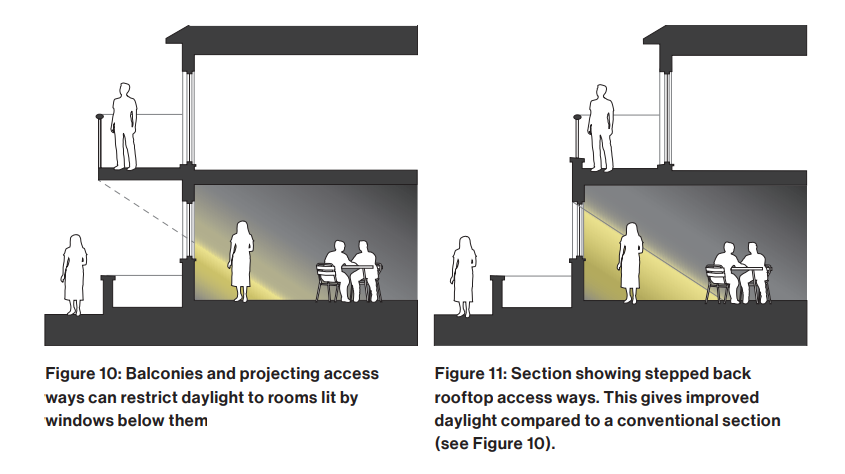Assessing Effects: Light Rights Assessments Detailed

Within the constantly changing landscape of property development, the concept of Light Rights has emerged as a crucial consideration that can significantly impact the success of projects. A Right to Light Survey serves as an essential tool for real estate developers, enabling them to evaluate the potential effects of their plans on the light received by adjoining properties. Grasping the nuances of these surveys is crucial, as they not only safeguard the rights of adjacent property owners but also shield developers from costly legal disputes.
As cities become more crowded and the need for new constructions increases, the effects of Right to Light become more significant. Developers must navigate a complex web of legal rights, historical precedents, and planning regulations. From the legal basis of Light Rights in the UK to practical strategies for conducting effective surveys, this article will delve into multiple aspects of Light Rights Assessments. It will also explore how these assessments can promote cohesive development and prevent potential conflicts in the planning stages, making Right to Light a topic of growing importance in the realm of city planning.
Grasping Right to Light Surveys
Right to Light Surveys are vital evaluations that establish whether a real estate project will violate the light rights of neighboring properties. This kind of survey assesses how much daylight and sun’s rays a development will obstruct for neighboring buildings and gardens. By analyzing local light conditions and legal entitlements, property developers can make educated decisions that comply with planning regulations.
The importance of these surveys lies in their ability to anticipate potential disputes related to light infringement. When developers neglect to conduct a Right to Light Survey, they risk creating disputes with neighbors who may seek legal action for blocked light. a fantastic read to evaluating light rights ensures that developers not only follow legal requirements but also foster positive relationships with the community.
Conducting a Right to Light Survey includes using specialized tools and techniques, including three-dimensional modeling and adherence to the Building Research Establishment (BRE) guidelines. These methods provide a detailed analysis of light levels both before and after a proposed development, allowing stakeholders to see the impacts clearly. By incorporating these assessments into the planning process, developers can protect their projects against possible legal challenges and enhance the overall viability of their developments.
Legal Aspects and Compliance
Exploring the legal environment concerning light rights is essential for property developers and property owners alike. Failure to comply with these regulations can result in serious legal complications, like injunctions to cease construction or financially burdensome alterations to designs. Comprehending the legal framework ensures that developers can move forward with certainty while honoring the rights of neighboring properties. Legal compliance not only protects projects but also fosters good community relations.
Property rights concerning light are rooted in common law, and these rights can be upheld through multiple legal channels. The Landlord and Tenant Act of 1954 is one of numerous statutes that affect light rights and can at times complicate matters further. Developers must be aware of how these laws pertain to their specific circumstance and seek legal counsel when necessary. Securing compliance is crucial to preventing controversies that could influence project schedules and financial plans.
Consulting with specialized legal counsel and conducting comprehensive right to light surveys can help mitigate hazards. By understanding the potential for legal remedies, such as monetary relief or adjustment of building designs, developers can tackle concerns before they intensify into formal objections or legal actions. This proactive approach can make the difference between a seamless development process and protracted legal battles, enhancing the total success of the project.
Case Studies and Industry Insights
In a significant case study, a developer faced significant challenges in an urban area where neighboring properties raised right to light objections. The project involved building a multi-storey residential block. The developer commissioned a right to light survey that revealed potential infringements on the light access of adjacent buildings. By interacting with the survey results proactively, the developer adjusted the design, minimizing the height of the structure and ensuring compliance with right to light considerations. This facilitated a more streamlined planning process and ultimately led to positive project approval.

Another valuable example involved a historic building renovation where the developers aimed to include a new wing. The right to light assessments revealed that the proposed extension would infringe on the light rights of neighboring residences, triggering potential legal disputes. By consulting with right to light experts, the team was able to devise alternative layouts that preserved the light access of neighboring properties while still achieving their design objectives. This proactive approach not only avoided costly legal battles but also enhanced community relations.
The growing importance of light rights in city planning is evident as cities become denser and the demand for new developments escalates. Developers are now recognizing the value of integrating right to light experts into their planning stages. Successful projects often prioritize comprehensive right to light surveys early on, ensuring they navigate potential disputes and adhere to legal compliance. By learning from recent case studies, developers can adopt best practices that protect both their interests and those of the communities they build in.
